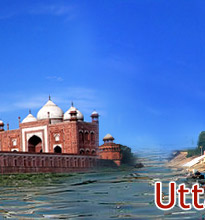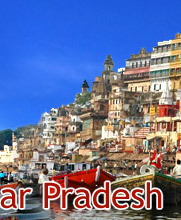 Uttar
Pradesh is second name to the warm welcome. The people of Uttar Pradesh
are very hard working and simple people. They stress on family values
and are very social in their outlook. Typical of eastern civilizations,
the stress is given on 'Izzaat' or honor where as the wealth and
popularity take a backseat. The people are very touchy and don't take
jokes pointed towards ones religion, caste and family members. It is
advisable to respect the sentiments of the local people. The people of
this state have learned to live happily in utter misery. In spite of
their hard working traits, the state is ridden by widespread poverty.
Uttar
Pradesh is second name to the warm welcome. The people of Uttar Pradesh
are very hard working and simple people. They stress on family values
and are very social in their outlook. Typical of eastern civilizations,
the stress is given on 'Izzaat' or honor where as the wealth and
popularity take a backseat. The people are very touchy and don't take
jokes pointed towards ones religion, caste and family members. It is
advisable to respect the sentiments of the local people. The people of
this state have learned to live happily in utter misery. In spite of
their hard working traits, the state is ridden by widespread poverty. Ethnicity of Uttar Pradesh
The population of Uttar Pradesh largely comprises Indo-Aryan sub-races. Most of the people belong to the chain of Aryan race that separated from the one in Iran. A small population that is based in hills and foothills district has Mongoloid percentages too. They are largely confined to districts bordering Nepal. The people who are settled in the Western Uttar Pradesh such as Jaats and Gujjars belong to a race that has arisen from the mixture of Indo-Aryan and Indo-Scythian tribes. They have physical features that are distinct from the people settled in Oudh and Eastern Uttar Pradesh. A tribe in Rohilkhand region of central UP, called Rohila Pathan quotes their lineage to the tribes of central Asia such as Mongols.
Religious Classification of the Population in Uttar Pradesh
Uttar Pradesh has been a melting pot of all the religions in India. The state has a sizable number of minorities who share an uneasy relation with the majority community in Uttar Pradesh. This has resulted due to a long history of enmity and mutual mistrust that these community share between them. Nevertheless, on day-to-day basis, the relationship remains strained but friendly. Hindus form the bulk of the population with a share that is close to 80 % according to the Government of India Census figure released in the year 2001. Muslims constitute the next largest block with a share of 18 %. The other minorities such as Christians, Sikhs, Buddhists and Jain constitute the remaining 1.5 %.









